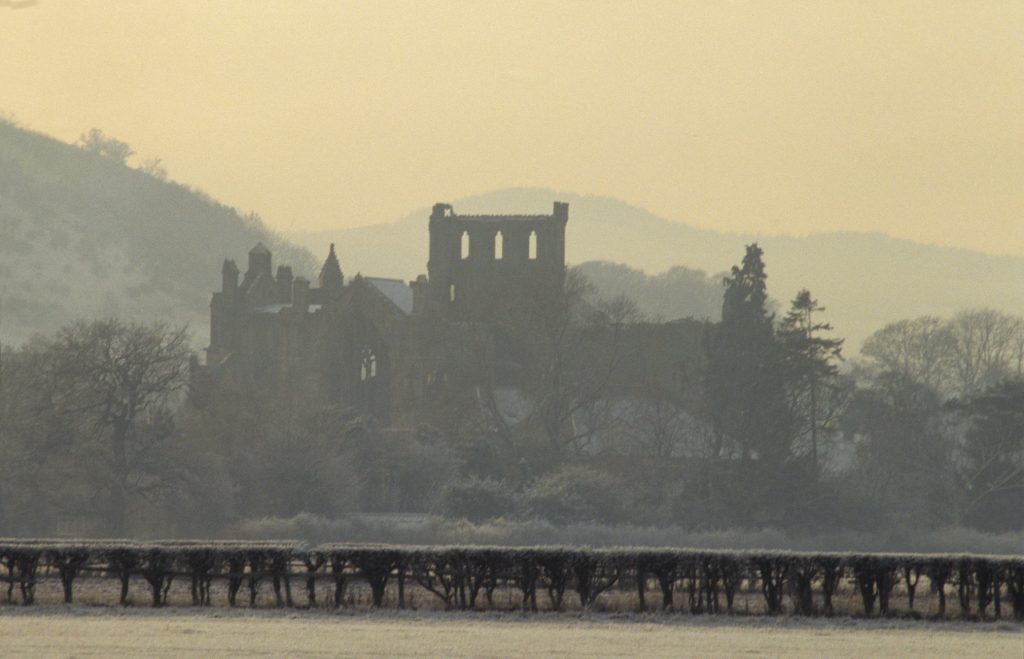Did you know campaigners and politicians still battle food poverty in Scotland today?
In earlier centuries though, people turned to Scotland’s great monastic houses in times of famine and hardship. The rule of St Benedict declared that the monks who followed his teachings must relieve the poor, clothe the naked, visit the sick, bury the dead, help those in trouble and console the sorrowing.
Melrose Abbey stands at the heart of a fertile valley, cultivated from 1136 by Cistercian monks and lay brothers. They made it one of the wealthiest foundations in the country.
Despite this, the abbey was not untroubled by hunger. Walter Bower’s great chronicle of Scottish history, the Scotichronicon, recounts one such time of suffering in the mid-1100s. The chronicler tells us that,
‘When the calamity of a deadly famine threatened, a vast crowd of destitute people reckoned to number four thousand gathered at Melrose, and erected huts and tents for themselves in the fields and woods around the monastery for a distance of two miles.’

The poor and hungry are said to have set up tents and huts in the fields around Melrose Abbey.
Melrose’s abbot at the time was Waltheof – the king’s stepson, a man renowned for goodness and holiness. One day, he walked among the poor with his cellarer, who was responsible for keeping the abbey well supplied. His name was Thomas the Good.
Waltheof, seeing the great suffering of the people, lamented that the abbey had not more food to give. He said,
‘My heart goes out to these people; but I do not have to hand anything to set before them. We must see to it that they have food until the autumn, lest (God forbid!) they succumb to starvation.’
Thomas agreed, and declared that he would kill all the abbey’s livestock to feed the people. But he was worried about the amount of grain left in the storerooms to make bread. He added that corn remained in only two of the abbey’s granges (or farms) at Eildon and Gattonside.

An illustration by Alan Sorrell of the abbey at its height.
The abbot was glad to hear the cellarer talk so generously, and together they visited the granges.
Waltheof thrust his staff into the corn and, the chronicler tells us, God made it grow. The abbot then told Thomas that he could give freely to the people. The food lasted until the harvest.
After his death, Waltheof came to be regarded as a saint.

